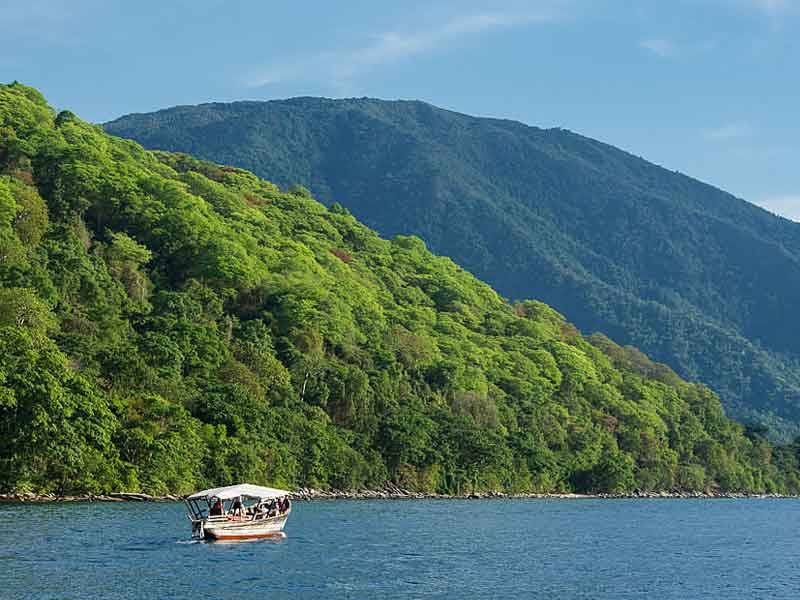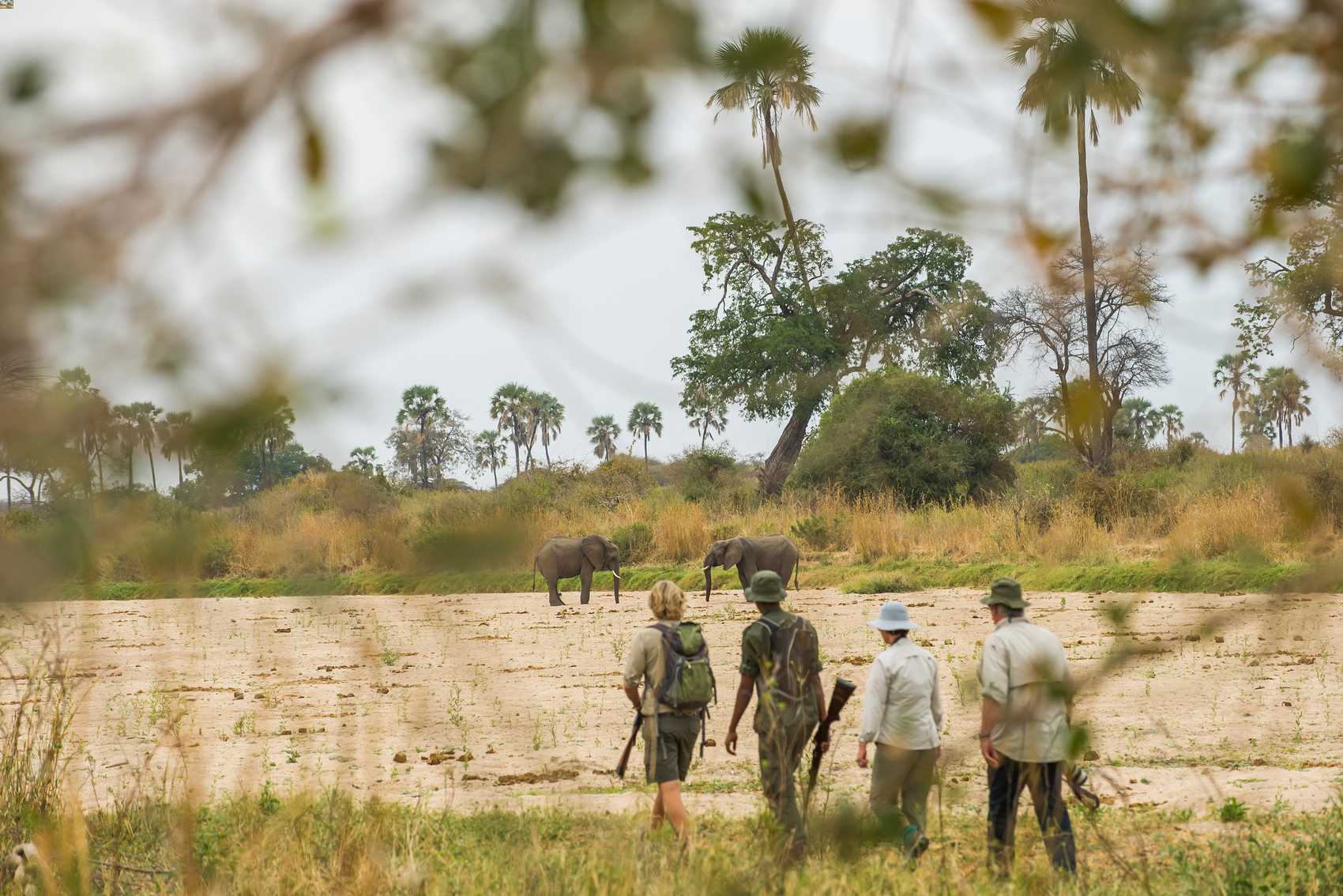5 Facts to Know About The Tanzania-Southern Safari Circuit : The 5 Things to Know about the Southern Safari Circuit in Tanzania are as follows: While Tanzania’s northern safari circuit are the best known and most visited by visitors, the southern safari circuit/region has a lot to offer intrepid travelers looking to venture off the beaten path. It’s possibly the only region in the nation that provides visitors with a closer immersion into the African scenery because of its lower profile. Being surrounded by other safari vehicles is quite uncommon in southern Tanzania safari circuit locations like Nyerere National Park (formerly Selous), yet it is all too common in the more well-known parks such as the Serengeti national park and Ngorongoro crater in Tanzania northern safari circuit and can mar the safari experience.

Tanzania’s Southern Safari Circuit is a region close to Dar es Salaam and the southern borders of the nation. The route is intended for those who desire to venture off the beaten path on the well-known northern circuit and encounter the country’s true wilderness. Here are five things you should be aware of before starting your rural safari in the southern Tanzania safari circuit.
- Amplified wildlife.
Large reserves in the south, including the Selous and Ruaha national parks, have an impact on how much wildlife is present in most parks. The most wild dogs are found in Nyerere National Park; however, due to their size, there is not a huge concentration of them there. Thousands of elephants live in Ruaha, but once again, their enormous size drives out the local population. More than 350 different bird and animal species can be found in the Selous Game Reserve. Kitulo National Park, Udzungwa Mountains National Park, Mikumi National Park, and Saadani National Park are among the additional parks in the southern Tanzanian circuit. All of these parks are in breathtaking areas with untamable wilderness, ready to be discovered.
- Ruaha National Park, one of the largest reserves in the country, is in this circuit.
Beyond Tanzania’s borders, no one is aware of one of East Africa’s largest national wildlife reserves. The largest national park in the nation, it is pure and undeveloped, and it is home to more lions and elephants than any other wildlife reserve in Tanzania. Over 10,000 elephants live in the vast and remote Ruaha National Park, along with zebras, buffalos, leopards, tens of thousands of birds, zebras, and leopards. The other major attraction in this reserve is the enormous Ruaha River, where you can go fishing or just observe the raging rapids. The park’s diversified terrain is complemented by the broad plains’ stony, semi-arid vegetation, which adds to the rolling hills that the reserve’s mountains made possible. You can participate in a variety of safari adventures and activities as a tourist, including boat excursions, bush hikes, fishing, and cultural excursions.

- You will save money by going south.
The southern safari circuit in Tanzania is not a popular tourist attraction. Comparing these safari locations to the well-known tourist attraction in northern Tanzania, the number of visitors is drastically lower. The quantity indicates that these locations provide adventurers traveling to southern Tanzania with room and peace. Given the difficult circumstances brought on by the epidemic, the southern parks and safari locations are your only chance to avoid the northern parks’ throng. The fewer visitors are nonetheless beneficial for those who choose southern destinations, as they get more for their money here.
When traveling the southern safari circuit, your evenings will be spent in top-notch lodges and hotels at reasonably affordable rates. Offers that reduce the prices to 15% or less of the standard pricing are typically frequent in the South. The southern circuit also has many camping grounds that let guests choose their rates, making such excursions affordable.
- Visit the south during the dry season.
Contrary to the northern safari circuit, the southern safari circuit in Tanzania has far less developed infrastructure. There are no roads at all; for example, there are no roads leading to Mahale Mountains National Reserve, so the only ways to get there are by boat or by air. The ideal time to view wildlife in the southern parks is during the dry season, which starts in June and lasts until October on the southern safari circuit. Routes utilized inside the park are typically dry during the dry season, making them simple to follow. Since the vegetation is similarly sparse at this time of year, wildlife is not hidden by it. In addition to the greenery, wildlife is concentrated along the rivers during the dry season, making it easy to see wildlife, 5 Facts to Know About The Tanzania-Southern Safari Circuit
- The southern circuit is closer to the Zanzibar archipelago.
Tanzania’s main center for international travel is Dar es Salaam. Most safaris to the south, especially those to the seaside hideaways, begin in this coastal town. The town serves as both a transit hub and a safari-filled tourist destination. Take your time and explore the Kivukoni fish market, Msasani Peninsula, St. Joseph’s Cathedral, Mbezi Beach, and Karibu Art Gallery while traveling to several southern attractions. After seeing these places, travel to Nyerere National Park or any other southern circuit park by ferry or flight. Visit the exotic islands in the Indian Ocean to enjoy their distinct culture, white sand beaches, and lodging in top-notch lodges to complete your Tanzanian safari experience after visiting these parks.
THE PERFECT TIME TO VISIT AND EXPLORE THE TANZANIA SOUTHERN SAFARI PARK
The dry season, which lasts from June to October, is the ideal time to go on a safari because there is less rain and more wildlife congregates near rivers and watering holes. Avoid traveling during the peak of the rainy season in March, April, and May unless you are primarily interested in wildlife, landscapes, or wildflowers.
WHERE TO GO IN THE SOUTHERN TANZANIA SAFARI CIRCUIT
The group size, age, fitness level, lodging preferences, safari length, and wildlife viewing demands are all taken into account while designing each safari. We’ll be pleased to assist you in determining which of these locations is best for your safari:
- Nyerere National Park;
- Mikumi National Park;
- Ruaha National Park;
- Kitulo National Park;
- Saadani National Park;
- Kilwa ruins;
- Udzungwa Mountains.


